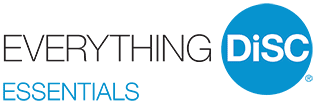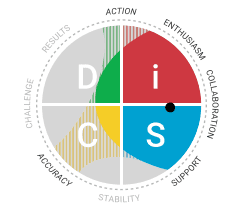
From The Great Resignation to Quiet Quitting, workplace trends have taken many twists and turns. The rapid changes in the world of work have led to significant upheavals for both employees and organizations, with individuals now experiencing a phenomenon known as The Great Gloom. This term refers to heightened disengagement, apathy, and a diminished sense of connection to both their work and their organization, surpassing even the disengagement levels seen during the pandemic. The way communication is handled within your organization directly affects employee engagement, morale, and productivity. Therefore, effective communication is crucial to addressing the systemic issues that contribute to The Great Gloom and potentially threaten your business.
Wiley Workplace Intelligence aimed to explore how organizations are currently communicating with their employees and the impact of this communication on the workforce. Is The Great Gloom and the resulting disconnect a widespread issue? How does effective communication contribute to building cohesive cultures and countering the disconnect driving this latest trend?
They surveyed 1,800 individuals to gauge their communication experiences at work. While most people expressed satisfaction with communication from their teams and managers, there was a clear dissatisfaction with cross-functional communication between different teams. Moreover, in-person employees reported lower satisfaction with inter-team communication compared to hybrid and remote workers, highlighting the need for improved communication equity in the evolving work environment.
Manager Communication Makes a (Big!) Impact!
Research highlights the crucial role manager communication plays in employee engagement and satisfaction. According to the findings, 77% of respondents believe that the extent of communication from their manager enhances their engagement levels. Frequent communication from managers positively influences various aspects of the workplace, including employee loyalty, collaboration, conflict resolution, and overall morale. Managers can use this insight to focus on communication as a means to improve these areas, benefiting both employee well-being and business performance.
The key takeaway from the research is the significant effect that effective communication—or the lack thereof—has on workplace engagement. Managers should prioritize one-on-one meetings to foster engagement and organizations should invest in enhancing cross-functional team communication. Doing so will help combat the issue of widespread apathy and disengagement often referred to as The Great Gloom.
Fortunately, there are tools available to assist organizations in improving communication and strengthening connections. Utilizing assessment tools and facilitated learning programs, such as Everything DiSC® and The Five Behaviors®, can equip teams with the skills needed to create a more cohesive and empathetic work culture, potentially transforming The Great Gloom into The Great Bloom.
About the Author
Marilyd Montalvo has been a part of the Corexcel team for over seven years. She has been a Certified DiSC Practitioner since 2017 and has worked with many organizations across the country using DiSC to build team morale, improve communication, and increase self-awareness and collaboration in the workplace. Marilyd is also a certified PXT Select Practitioner helping many organizations hire right the first time. Marilyd takes pride in providing quick, efficient, and thorough support to all of our clients. Marilyd works hard to ensure that Corexcel meets their mission of providing our customers with the tools to develop individually while excelling professionally.







 The labor market is strong and continues to grow, with employers posting 11.3 million jobs in May 2022, making it an exciting time to be looking for a new job. According to the latest jobs report from the Bureau of Labor Statistics (BLS), hiring demand has remained strong in most industries, except for manufacturing and mining.
The labor market is strong and continues to grow, with employers posting 11.3 million jobs in May 2022, making it an exciting time to be looking for a new job. According to the latest jobs report from the Bureau of Labor Statistics (BLS), hiring demand has remained strong in most industries, except for manufacturing and mining. In the slow return to normalcy after the pandemic, career change, and simply finding a job again, is on everyone’s mind. As employers are concerned about the shortage of skilled workers, people are looking for an industry they can lend their services to. Following a career path today can mean maneuvering many twists and turns, setbacks, side roads, and blind alleys. Where is the path to a new career that provides enrichment, stability and growth potential?
In the slow return to normalcy after the pandemic, career change, and simply finding a job again, is on everyone’s mind. As employers are concerned about the shortage of skilled workers, people are looking for an industry they can lend their services to. Following a career path today can mean maneuvering many twists and turns, setbacks, side roads, and blind alleys. Where is the path to a new career that provides enrichment, stability and growth potential?


